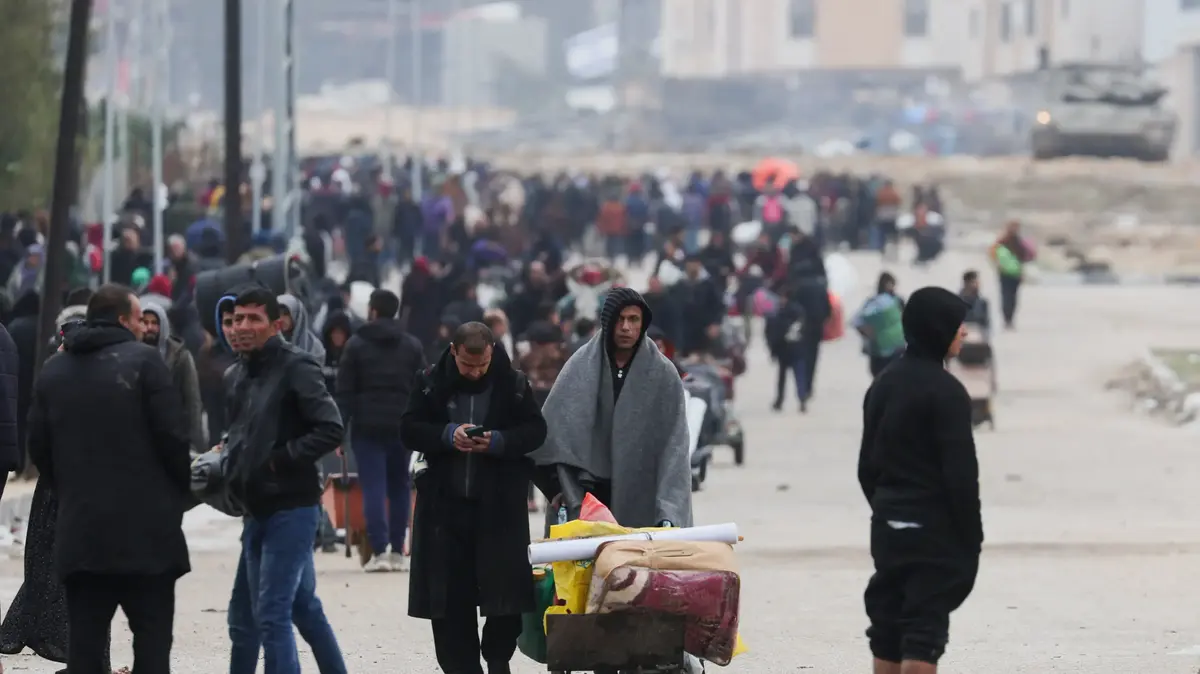Nir Baram's book from 2018, "Wake Up", dealt with a complex and intense relationship between two childhood friends: Joel and the narrator, a member of Baram's character who is not mentioned by name.
The book unfolds over three timelines: the protagonists' final year in elementary school, when a girl named Tali breaks into their friendship and sets in motion a chain of events that ends in betrayal and prolonged disconnection;
Their final year in high school;
And the last year of Joel's life, until his suicide while the narrator was at a literary festival in Mexico.
"The World is a Rumor" is a kind of sequel to "Awakening." The narrator now gets his own name, Jonathan, as if only after Joel's departure is he able to take on a separate essence; Indeed, a significant portion of the plot deals with Jonathan's attempt to separate himself from Joel, to be released under the weight of too many memories.
The novel also takes place in two timelines, both of which continue those of the previous book. The first axis describes Jonathan's years after high school: the death of his mother, the beginning of his writing career, the relationship with his father, and especially the love triangle between Jonathan, Joel and Tali. The father figure and the character of Tali both get a much more significant touch than they had, and the charged relationship between the son and his father, which includes deep devotion alongside toughness and mutual teasing and above which the shadow of the dead mother hovers, is particularly touching.
These parts, which stand as a sign of gradual distancing between Jonathan and Joel, complete the interrupted timeline of the previous book, and yet they are constantly revolving around those past events, conjuring them up and deciphering them in new ways. It seems that the relationship triangle is also nothing more than the reverberation of those events in sixth grade - whether it is Jonathan's late revenge for Joel's childhood betrayal, or whether he is attracted to Tali and Joel because they are the only people in his life whose existence exists: "Only Joel and Tali, His childhood and the wadi and the worlds of the imagination and the defeats, can see him or at least get closer ”(p. 60).
The second timeline opened about four years after Joel's death.
Jonathan separated from his wife, Shira, moved away from most of his friends, and his life revolves largely around his son, Itamar.
Little Itamar symbolizes the present and the future, but the past again bothered Jonathan more: "The loss of Joel freed the wildness of memory - completely mixed between hallucinations, memory and dreams, and sometimes he no longer understands what he sees" (p. 11).
In desperation, Jonathan turns to the Dream Returner, also a previous figure of Baram: a man who is able to observe the dreams of others and give them back to them in every detail, and who has also recently developed the ability to blunt the power of memories.
But this path turns out to be more complex than what Jonathan first imagined, and involves a reconnection and full force to the memories from which he seeks to escape.
Memory is the central theme of the book, as it was in its predecessor - it is no coincidence that the only book mentioned by name in the plot is "Following the Lost Time" by Frost. At the heart of Jonathan's memories is that sixth grade winter, the main point from which everything began or everything went wrong. To a large extent, the two timelines unfolding in the book are a kind of interpretation or reworking of those events, an eternal return to them.
Memory is something that is in an imaginary space. Hence perhaps also the name of the book: for one who is immersed in memory, the real world is nothing but a rumor. Already the first chapter creates an explicit identification between memory and two other states of consciousness in which man is outside of normal existence: dream and writing.
The connection between memory and writing - or rather, the weaving of stories - is especially developed here: as children, Jonathan and Joel immersed themselves in stories to such an extent that they were lost within them indefinitely. Jonathan even begins to suspect that the stories are responsible for Joel's death: His last life testifies "(p. 150).
Jonathan gradually discovers that he too is trapped, perhaps no less than Joel. Even with his son, he manages to communicate only through imaginary plots that become increasingly complex and twisted, and that may be the crack through which his memories flow to Itamar against his will. "The oxygen of your writing is the memory," warns the dreamer Jonathan (p. 18), and Tali adds: "You revive the memory and imagination not to write, but to see another world and truly be in it" (p. 147). This is the choice that Jonathan is required to make: between life and present on the one hand, and between writing and past, on the other.
The many descriptions of the landscape manage to create the space in the reader's consciousness, but Baram's writing is at its best in dialogues and descriptions of mental processes.
It is marvelous to reflect ambivalence, conflicting and contradictory emotions that reside in one bend, and the feeling is always that for every word said two others are silenced, more important than it.
All of this manages to compensate for a certain paucity on the plot level: it's not exactly that not much happens, but that the main plot moves are quite simple and probably could have been summed up in a few chapters.
In the first plot axis, Baram seems to be trying to moderate the problem through passages that deal with the father's political career in which Jonathan joins;
Although these passages are interesting in themselves, illuminating certain aspects of the son-father relationship, their relevance is limited.
While the second plot axis is laden with slightly repetitive episodes in which Jonathan searches for the dreamer, finds him or discovers some detail of information, and then loses it again or is attacked with further doubts.
In contrast to "awakening", where the three timelines were necessary, here the choice of structure is less natural.
It seems that part of her job is to preserve Jonathan's position as someone who is out of time, or for several times at a time.
At the same time, each plot line illuminates the other in new forms and deepens it.
The two plots end in a breakup, and in a kind of post-reconciliation, but the first plot line casts a shadow over the latter's optimistic ending - as readers know that reconciling with the memories has happened before, and has not resolved anything.
It is not a book that offers magic solutions, and not even a real cure - but at most the possibility of "containing the times, hearing them shriek within the moment that is now emerging, and yet devoting oneself to it" (p. 262).
The world is a rumor / Nir Baram, Yedioth Sefarim








/cloudfront-eu-central-1.images.arcpublishing.com/prisa/YP5IFSHIBSYKN4S6TPUBQE3MIE.jpg)






